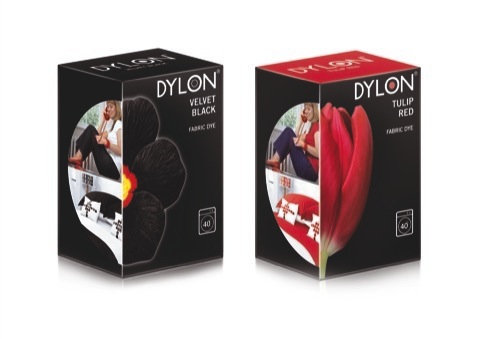The airbrush
Guest blogger Charlotte Newbold, from Coley Porter Bell, discusses the similarities, and differences, between airbrushing fashion photographs and manipulating imagery for food packaging.
Last week top fashion model Erin O’Connor launched London Fashion Week with an attack on what she called ‘The dominance of a singular aesthetic’ in the fashion industry. While her broad target was fashion’s obsession with youth, perfection and size zero, her fire was trained on a very specific aspect of the fashion industry: the use of Photoshop – which even some fashion editors admit is getting a little out of control.
Whether it’s airbrushing a complexion, removing orange peel from a leg, clipping some bingo wings or making a waist that little bit more pinched, it’s hard to construe it as anything other than lying to consumers.
Not only does it misrepresent reality while claiming to be straight reportage, it creates false expectations amongst all of us about the nature of beauty and the human form. It fuels an insatiable and impossible desire for perfection, setting up the susceptible consumer for dissatisfaction, dysmorphia and potentially even, depression.
Some accuse the design industry of doing exactly the same thing in the final stages of packaging design. And yes, it’s true that of all the thousands of images that pass through our studio each year, I don’t think there’s one that’s not Photoshopped or manipulated to some extent.

Many of the images are graphic, so we might simply change a curve or intensify a colour. Beautiful – but harmless, job done. But many are more photographic and we change them just the same. We can make bread look more golden, plump up tomatoes, shine or boost rosiness in apples. We can cut and paste the good bits of images and erase the bad bits.
But I don’t feel like an evil manipulator of images or people. I don’t feel like a professional liar. So what is the difference between what Erin O’Connor is complaining about and what I do, what we all do, at Coley Porter Bell?
I think there are four key differences that suggest we are not guilty of misleading consumers. The first is that while any newspaper or magazine can represent anyone else any way they choose, (with consent), we can’t do that with packaging. There is a battery of consumer protection laws in place to prevent it.
You can make Kate Winslet’s thighs look slender and unblemished like Barbie’s, or you can double the size of Andy Roddick’s biceps, but as long as you aren’t making a commercial claim based on those manipulations, no crime has been committed. If however, I Photoshop more topping onto a pack shot of a pizza or make the filling in a sandwich look thicker, then we would quite rightly be guilty of misrepresentation and would have to answer to trading standards laws. So the law keeps our Photoshop wands in check.

Then there’s the reality check, if I fake the appearance of a pie, you can simply open the pack and check the image against the product. If they don’t match up, you can punish us by not buying that brand again or calling in the law. Few of us will ever get close enough to Kate Winslet to inspect her thighs and compare their splendidness to the cover of GQ. Nor Andy Roddick’s biceps come to that.
But more importantly, even if we did misrepresent a pizza or a sauce, what’s the worst that could happen? A few people might spend a few laborious extra minutes re-grilling the cheese trying to recreate our perfectly toasted pack image. It could be a little frustrating but really, there’s not much harm done.
Contrast that with the immense damage done to many women who spend their lives trying to reform themselves in the image of their air brushed idols.
Fourthly, I think we should give consumers some credit. When faced with advertising images and shelves of packaging, they understand there will be some salesmanship involved. They don’t always expect commercial communications to be literally true. There is ‘a definite suspension of disbelief’, but we don’t expect to be sold ’Kate Winslet’.
So after due consideration, I have concluded that we in the design industry, are not liars and cheats. Like lawyers, we are advocates putting the best possible case forward for our clients. Unlike Photoshopped images in fashion and photo journalism, we are not trying to mislead the jury. There is no danger of harmful imitations. My case rests m’lud.





Enjoyable article, though I feel that the term airbrushing gets abused somewhat. Image manipulation has been around since the first daguerrotypes were scratched to add detail, or to sharpen focus etc.
Airbrushing and misrepresentation are not the same thing. Its the prevalence of easy digital manipulation that has led to such liberties and the manipulated vernacular. Food packing used to be dominated by illustration don’t forget… often airbrushed exquisitely, inclusive of fake condensation and dewdrops in many cases.
Thats my contribution to the discussion, yes a bit of a rant, but what do you expect from someone with a PhD in airbrush history – ha ha 😉
I agree with the article, but the way the magazines/papers are highlights the need for the battery of consumer protection laws to be maintained, because given the chance…
What is there then, some kind of ‘perception of honesty scale’? How far can one take image manipulation before it is no longer enhancement and becomes a big fat lie, whether it be an image of a person or a burger? People know when an apple has been rosied up or a tomato plumped in an ad, on pack, at POS, because they know what the real things look like. And they really don’t like it, don’t appreciate it. It treats people like they’re stupid and gullible.
I don’t know if you are doing any of us a favour by comparisons to lawyers. I know lawyers who are the most ethical people one could imagine but that doesn’t appear to hold true for many of them. The general perception is even worse than this. Perhaps we should be compared to politicians or journalists instead?